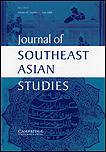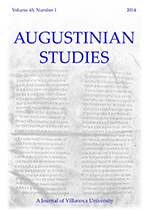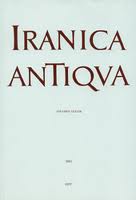The Persians are an Iranian ethnic group who comprise over half of the population of Iran. They share a common cultural system and are native speakers of the Persian language as well as of the languages that are closely related to Persian.

Elam was an ancient civilization centered in the far west and southwest of modern-day Iran, stretching from the lowlands of what is now Khuzestan and Ilam Province as well as a small part of southern Iraq. The modern name Elam stems from the Sumerian transliteration elam(a), along with the later Akkadian elamtu, and the Elamite haltamti. Elamite states were among the leading political forces of the Ancient Near East. In classical literature, Elam was also known as Susiana, a name derived from its capital Susa.

Atropatene, also known as Media Atropatene, was an ancient Iranian kingdom established in c. 323 BC by the Persian satrap Atropates. The kingdom, centered in present-day northern Iran, was ruled by Atropates' descendants until the early 1st-century AD, when the Parthian Arsacid dynasty supplanted them. It was conquered by the Sasanians in 226, and turned into a province governed by a marzban ("margrave"). Atropatene was the only Iranian region to remain under Zoroastrian authority from the Achaemenids to the Arab conquest without interruption, aside from being briefly ruled by the Macedonian king Alexander the Great.
Encyclopædia Iranica is a project whose goal is to create a comprehensive and authoritative English-language encyclopedia about the history, culture, and civilization of Iranian peoples from prehistory to modern times.

Taq-e Bostan is a site with a series of large rock reliefs from the era of the Sassanid Empire of Persia (Iran), carved around the 4th century CE.
The Arts and Humanities Citation Index (AHCI), also known as Arts and Humanities Search, is a citation index, with abstracting and indexing for more than 1,700 arts and humanities academic journals, and coverage of disciplines that includes social and natural science journals. Part of this database is derived from Current Contents.

Clifford Edmund Bosworth FBA was an English historian and Orientalist, specialising in Arabic and Iranian studies.

Iranian studies, also referred to as Iranology and Iranistics, is an interdisciplinary field dealing with the research and study of the civilization, history, literature, art and culture of Iranian peoples. It is a part of the wider field of Oriental studies.

Touraj Daryaee is an Iranian Iranologist and historian. He currently works as the Maseeh Chair in Persian Studies and Culture and the director of the Dr. Samuel M. Jordan Center for Persian Studies at the University of California, Irvine.
Haft Tepe is an archaeological site situated in the Khuzestan Province in south-western Iran, about 15 kilometers southwest of the ancient city of Susa. At this site the possible remains of the Elamite city of Kabnak were discovered in 1908, and excavations are still carried out.

Alireza Shapour Shahbazi was a prominent Persian archaeologist, Iranologist and a world expert on Achaemenid archaeology. Shahbazi got a BA degree in and an MA degree in East Asian archaeology from SOAS. Shahbazi had a doctorate degree in Achaemenid archaeology from University of London. Alireza Shapour Shahbazi was a lecturer in Achaemenid archaeology and Iranology at Harvard University. He was also a full professor of archaeology at Shiraz University and founded at Persepolis the Institute of Achaemenid Research in 1974. After the Islamic revolution, he moved to the US, firstly teaching at Columbia University and then later becoming a full professor of history in Eastern Oregon University.
John E. Woods is a Professor Emeritus of Iranian and Central Asian History in the Departments of History and of Near Eastern Languages and Civilizations and the College at the University of Chicago.

The Journal of Southeast Asian Studies is a peer-reviewed academic journal covering scholarly studies on Southeast Asia. It publishes articles from a wide range of disciplines in the humanities and social sciences. The journal's extensive book review section includes works in Southeast Asian languages. From its foundation in 1960 until 1969, it was the Journal of Southeast Asian History.

Augustinian Studies is a peer-reviewed academic journal devoted to the study of Augustine of Hippo. Its primary focus is the study of Augustine himself, as viewed from various theological, philosophical, and historical perspectives. Articles concerned more broadly with the study of Augustine, such as studies of other persons, groups, or issues in Augustine's time, may also be included. The journal also publishes the annual Saint Augustine Lecture, given each Fall at Villanova University. A special double issue of Augustinian Studies, containing essays on Augustine's City of God, was published in 1999. The journal's editor-in-chief is Ian Clausen. The former editor was Jonathan P. Yates, who replaced Allan D. Fitzgerald in 2012. Augustinian Studies is published by the Philosophy Documentation Center, in cooperation with the Augustinian Institute at Villanova University.
Medical Humanities is a quarterly peer-reviewed academic journal covering the field of medical humanities. The journal presents the international conversation around medicine and its engagement with the humanities and arts, social sciences, health policy, medical education, patient experience, and the public at large. Led by Dr Brandy Schillace, the journal publishes scholarly and critical articles on a broad range of topics. These include history of medicine, cultures of medicine, disability studies, gender and the body, communities in crisis, bioethics and public health.
Iran and the Caucasus is a biannual multidisciplinary peer-reviewed academic journal published by Brill Publishers in collaboration with the Caucasian Centre for Iranian Studies (Yerevan). The journal covers the history, culture, anthropology, literature (textology), folklore, linguistics, archaeology, politics, and economy of the region. Articles are published in English, French and German. It was established in 1997 by Garnik Asatrian, the head of the center. The editor-in-chief is Garnik Asatrian (Yerevan).

The Journal of African History (JAH) is a triannual peer-reviewed academic journal. It was established in 1960 and is published by Cambridge University Press. It was among the first specialist journals to be devoted to African history and archaeology and was founded by John Fage and Roland Oliver. As stated on the journal's website:
The Journal of African History (JAH) publishes articles and book reviews ranging widely over the African past, from ancient times to the present. Historical approaches to all time periods are welcome. The thematic range is equally broad, covering social, economic, political, cultural, and intellectual history. Recent articles have explored diverse themes including: labour and class, gender and sexuality, health and medicine, ethnicity and race, migration and diaspora, nationalism and state politics, religion and ritual, and technology and the environment.
Acta Iranica is a periodical on Iranian studies published mainly in French, English, and German.

Seifollah Kambakhshfard was an Iranian archaeologist, who specialized in archaeology and Ancient History of Iran.
Studia Iranica is a biannual peer-reviewed academic journal covering Iranian and Persianate history, literature, and society published by Peeters Publishers on behalf of the Association for the Advancement of Iranian Studies. The editors-in-chief are Marcel Bazin and Rémy Boucharlat. Articles are published in English or French and cover a period ranging from the proto-historical to the modern period, while its geographic boundaries coincide with those of the area where ancient Iranian or modern Iranian languages were or are spoken.











